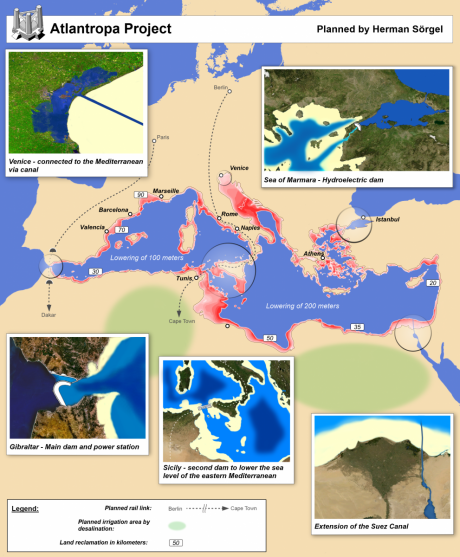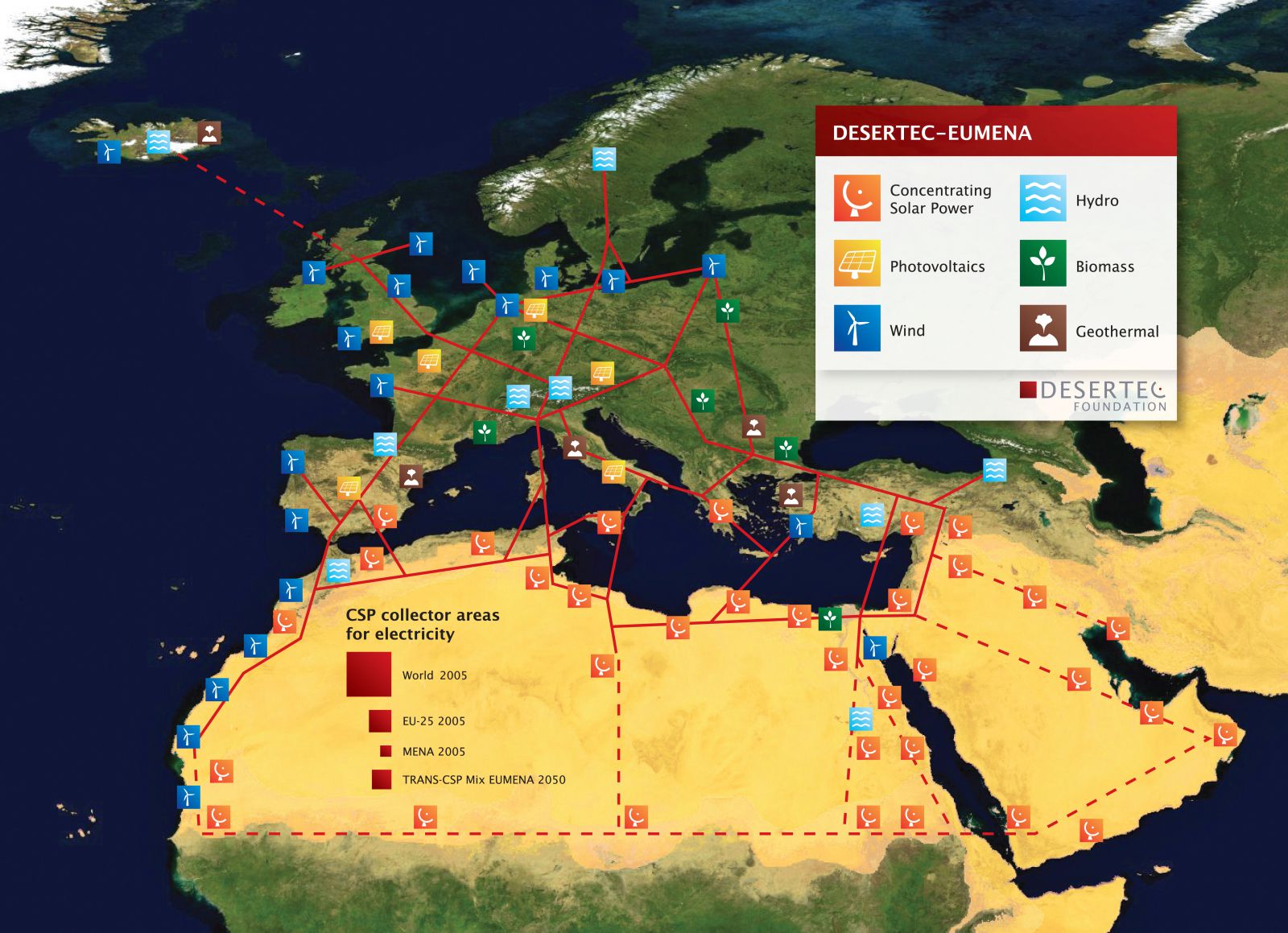CWEH Blog 8 November 2018
Stuart Richard Peters
 By Devilm25 (map), VulcanTrekkie45 (translation)
By Devilm25 (map), VulcanTrekkie45 (translation)
Over the last six years the energy landscape has remained a field of fascinating developments that include: the wild fluctuations of oil prices, the mounting evidence of the impact of climate change from emissions, to the rise of solar power as a major source of clean energy. That aside, different pathways and scenarios continue to explored to achieve the major objectives of the transition to a low-carbon economy and bring universal access to electricity in developing countries where it is still lacking. Generally speaking, a broad consensus exists that there are no simple or easy answers to these hugely pressing challenges.
One of the more eye-catching pathways to develop a sustainable, and furthermore, a secure supply of electricity remains the Supergrid. For the uninitiated, this is best described as a form of ‘energy internet’ where countries can import and export electricity between one another in real time. The key sources of generation are wind or solar power. The Supergrid has received a fair amount of attention in the media in Western Europe and North America but as yet concrete steps to the actual construction of one so far remains elusive.
The concept of an international electricity (or energy) network is nothing new. In the 1920s there was the Atlantropa project pioneered by Herman Sörgel, a German architect. It was an ambitious engineering project that aimed to dam the Strait of Gibraltar, in conjunction with four other dams located strategic locations around the Mediterranean. The objective was to produce a vast amount of hydroelectricity for Europe and Africa. The huge drawback to the project that led to its demise was it involved the draining of the Mediterranean Sea. Nevertheless, the project was enthusiastically promoted by Sörgel until his death in 1952.
Another historical project that is of contemporary importance is the Congo River’s Grand Inga hydroelectricity scheme. The idea of using the Congo’s River, the second largest in the world, for electricity production has been around for more than a century. Such is the enormous potential of the scheme it would help light up the African continent, in addition to providing the Congo with much needed electricity to support its ‘development’ and large-scale mining activities. There always remains the possibility of electricity being exported to Europe. Within the last decade progress towards building a massive dam has slowly inched forward. It has now reached the point where Chinese and European firms are joining forces and are prepared to put massive investment into the dam’s construction. As and when any construction starts the economic and environmental implications will arguably be off the scale.
In 2009 another German ‘grand plan’ to emerged that had parallels with the earlier Atlantropa project. This time DESERTEC, a consortium of large German firms that included Bosch and Siemens and a charitable foundation, proposed the construction of a ring concentrated solar power (CSP) plants in the Sahara throughout North Africa to generate electricity to be exported to Europe. The German Aerospace Institute did a lot of modelling and concluded that in principle the project was viable. It was almost a case of history repeating itself. This time many of the North African countries saw the project as another form of modern day colonialism through the exploitation of resources. They were highly critical of the idea that a high percentage of the electricity would be exported to Europe and they would derive little material benefit from it. Lest not forget the Arab Spring certainly did not help DESERTEC’s fortunes either. In 2013 the DESERTEC consortium collapsed. The consortium might have disappeared but the idea of generating electricity in North Africa and exporting it to Europe did not go witTh it. The idea had to be reworked so it caters to the interests of individual countries.

Whilst information about the European Supergrid is relatively widespread, it has largely gone unnoticed that there has been a spike in interest about an Asian Supergid. Championed in 2011 by Masayoshi Son, a Japanese billionaire, a bandwagon in terms of garnering interest amongst other countries within the region has picked up speed. One of the more important developments is that China has embraced the idea through it broader Belt and Road Initiative (BRI). The BRI is a state backed programme that intends to boost trade and economic growth across Asia through infrastructure projects. One major player in the BRI is the State Grid Corporation of China. This body has already made significant investments towards laying the potential foundations for an eventual supergrid.
On a general level, there is much enthusiasm for the idea of supergrids (and large-scale power networks), yet much more needs to be understood about the environmental consequences of them. For example, the European supergrid is ‘greener’ compared to the Congo’s Grand Inga Dam, in terms of the exploitation of wind power from the North Sea, than the flooding of vast areas of land, the displacement of indigenous people and the destruction of delicate natural ecosystems. Hence, a balance needs to be struck between the need to develop secure and sustainable ways of generating electricity and at the same time minimising the impact on the environment. This is what is required for the future.
See also: About "Asia Super Grid (ASG)"


